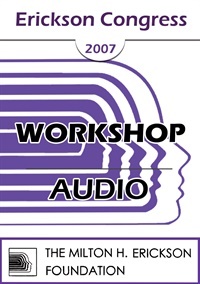
IC07 Workshop 26 - Indirect Suggestions & Therapeutic Binds in Hypnosis - Stephen Lankton, MSW, DAHB
- Average Rating:
- Not yet rated
- Topic Areas:
- Workshops | Ericksonian Hypnosis and Therapy Techniques | Hypnosis | Binds | Indirection | Language of Hypnosis | Suggestion
- Categories:
- Erickson Congress | Erickson Congress 2007
- Faculty:
- Stephen Lankton, MSW
- Duration:
- 1:53:33
- Format:
- Audio Only
- Original Program Date:
- Dec 07, 2007
- Short Description:
- This technique is among the most crucial to good therapy. Participants will be guided through several exercises to help them learn and practice the construction of six forms of indirect suggestions and four forms of binds. A demonstration using these forms will illustrate the implementation of this set of language techniques for the induction and treatment process. The use of indirect suggestions in further treatment will be outlined.
- Price:
- $15.00 - Base Price
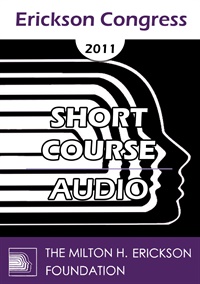
- Average Rating:
- Not yet rated
- Topic Areas:
- Short Courses | Goals of the Therapist | Hypnosis | Post-Hypnotic Suggestion | Suggestion
- Categories:
- Erickson Congress | Erickson Congress 2011
- Faculty:
- Jose Cava Roda, Lic. Psychologist | José Cava, Lic Psychologist
- Duration:
- 1:34:42
- Format:
- Audio Only
- Original Program Date:
- Dec 09, 2011
- Short Description:
- The probability that posthypnotic suggestions will be carried out is highly increased by associating them to the client’s daily life events or activities with an analogical or metaphorical relationship to the therapeutic goals. These life events or activities work as a frequently available signal that facilitates the in-tended behavior or response.
- Price:
- $15.00 - Base Price
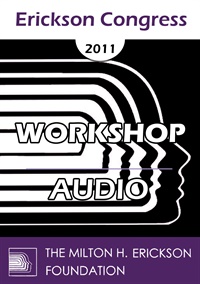
- Average Rating:
- Not yet rated
- Topic Areas:
- Workshops | Ericksonian Hypnosis and Therapy Techniques | Hypnosis | Psychotherapy | Suggestion
- Categories:
- Erickson Congress | Erickson Congress 2011
- Faculty:
- Dan Short, PhD
- Duration:
- 59 Minutes
- Format:
- Audio Only
- Original Program Date:
- Dec 07, 2011
- Short Description:
- The conceptualization of “permissive suggestion” ranks among the most important contributions made by Milton Erickson to hypnosis and psychotherapy. Permissive suggestion is a technique that forms a bridge between a full spectrum of hypnotic procedures and the type of processing needed to address existential dilemmas commonly dealt with in psychotherapy.
- Price:
- $20.00 - Base Price
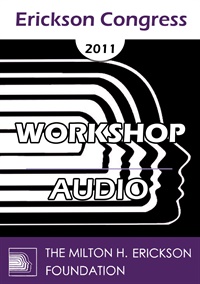
- Average Rating:
- Not yet rated
- Topic Areas:
- Workshops | Hypnosis | Language of Hypnosis | Metaphors | Suggestion
- Categories:
- Erickson Congress | Erickson Congress 2011
- Faculty:
- Norma Barretta, PhD
- Duration:
- 59 Minutes
- Format:
- Audio Only
- Original Program Date:
- Dec 07, 2011
- Short Description:
- Words are the tools of hypnosis. The English language, full of ambiguity, offers remarkable opportunities to embed therapeutic healing messages into the induction and into the body of the hypnotic session. This workshop offers examples and demonstration of multiple meaning and the creative incorporation of linguistic metaphor into therapeutic uses of hypnosis.
- Price:
- $20.00 - Base Price
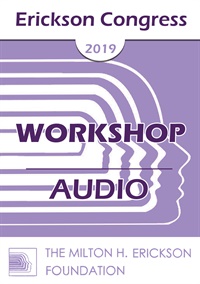
- Average Rating:
- Not yet rated
- Topic Areas:
- Workshops | Obsessive Compulsive Disorder (OCD) | Hypnosis | Post-Hypnotic Suggestion | Suggestion
- Categories:
- Erickson Congress | Erickson Congress 2019
- Faculty:
- Krzysztof Klajs, Dipl. Psych
- Duration:
- 1 Hour 57 Minutes
- Format:
- Audio Only
- Original Program Date:
- Dec 15, 2019
- Short Description:
- OCD is a rather chronic illness affecting about 2.5% of adults. Its diagnosis is perceived as a demanding and challenging one. Trance phenomena can be described as natural behavioral manifestations of the trance state. They can be observed in individuals as well as in family communication patterns. In OCD families, one of the most powerful and widely present trance phenomena are the posthypnotic suggestions. They are invisible, deeply hidden, mighty and long lasting.
- Price:
- $15.00 - Base Price
Please wait ...

